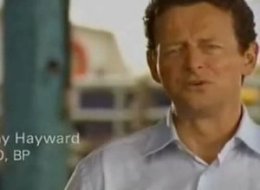 Cover of A Sense of Urgency
Cover of A Sense of Urgency
Originally Published at:
Summary and Review of a Sense of Urgency by John Kotter | Bizcovering
EXECUTIVE SUMMARY
John P. Kotter is the author of Leading Change, The Heart of Change, and Our Iceberg Is Melting. After the completion of these three books there was still a question that he would often get asked, “What is the single biggest error people make when they try to change?” In this book, A Sense of Urgency, Kotter explores the differences between true urgency and false urgency.
It all starts with a sense of urgency
A real sense of urgency should be exceptionally encouraging and observant. Urgency should be a motivator, something that gives you the focus to tackle and complete projects that would normally consume your work schedule.
Increasing true urgency
A business case is a tool used to express that an issue is significant and that it needs to be addressed without delay. It helps to diminish complacency by saying, “What we are doing is no longer what we will need in the future.
Tactic one
When an organization becomes too focused on their internal elements they lose focus on the external components of the business and this can produce a huge down ward spiral for the company.
Tactic two
In some cases a sense of urgency is undermined by complete exhaustion. Clutter and fatigue work in much the same way, they fill up our appointment books but in the end leave us with nothing to show for our day.
Tactic three
When a crisis occurs within an origination people hold one of two perspectives. The first group observes crises as an unpleasant event. They think of the people that will be hurt, if they will be affected, the plans that it will interrupt and the organizations outlook. The second group is the group sees crises as an opportunity to reinvent the company and make greatly needed changes at a time when its employees are eager to do anything they can to change the companies direction.
Tactic four
In every company, there is always a cynic waiting to tell you that what has always been done is working fine and there is no reason to change it.
Keeping urgency up
To maintain urgency up over an extensive period of time, urgency has to be re-created over and over again.
THE TOP TEN THINGS TO BE LEARNED
The ten concrete things practicing managers should take from this book are:
1. What traits to look for in a productive employee.
2. How to know when change is needed in your business.
3. The strategy needed in increasing a true sense of urgency.
4. How a business’s success can create an inner focus and damage a business’s chance for success in the future.
5. Listen to your frontline employees. They are the face of your business.
6. Questions to ask when trying to find complacency and a false sense of urgency.
7. Everything begins with urgency.
8. People who are complacent are satisfied with the status quo and do not like the unfamiliar.
9. Those with a false sense of urgency have a tendency to be extremely nervous, irate, irritated, and drained.
10. People with a false sense of urgency can be you, me, our superior, or anybody.
FULL SUMMARY OF A SENSE OF URGENCY
John P. Kotter is the author of “Leading Change”, “The Heart of Change”, and “Our Iceberg Is Melting”. After the completion of these three books, there was still a question that he would often get asked, “What is the single biggest error people make when they try to change?” Through his research and asking different managers what there experience is, he landed on the conclusion. That conclusion was that at the beginning of any effort to change you have to start with a sense of urgency. This can sometimes be mistaken for a false sense of urgency. Everyone looks like they are actively per sewing the company’s goal but really they are annoyed and irritated. This can make it hard to keep your focus on the company’s main objective. In this book “A Sense of Urgency” exploring the difference between true urgency and false urgency will be discussed.
It all starts with a sense of urgency
A real sense of urgency should be exceptionally encouraging and observant. Urgency should be a motivator, something that gives you the focus to tackle and complete projects that would normally consume your work schedule. Destructive complacency is not only found in the employees of a business but also in the businesses owners. This especially happens to businesses that are veterans to success. They become complacent with the activities of the business and loss sight of new prospects. The destructive part about complacency is that it is hard to spot from the inside of a company and can cause catastrophic disaster to the business in the end. In today’s world of business change is accelerating and will continue to expand. One form of change is external change and must be spotted and acknowledged to be acted upon. In most cases, external change is not acknowledged because people do not look hard enough, can’t find time to look hard enough, look but do not believe or do not want to believe what is right in front of their eyes. In all of the businesses that were studied in the writing of this book, seventy percent of situations in which considerable changes were needed they were either not full launched, the change in efforts were unsuccessful, changes were over budget or changes were behind schedule.
Complacency and false urgency
Complacency and false urgency are both a contradiction to true urgency. To correctly understand true urgency first you must understand its parallel’s. The definition of complacency is “a feeling of contentment or self satisfaction, especially when coupled with an unawareness of danger or trouble.” Most people would consider complacency a thought but the definition lets us know that it is a true feeling. The definition also lets us know that complacency is within one’s self, which makes us responsible for our own complacency. People that are complacent rarely admit this trait and will in most cases argue this point. If confronted with the notion that they are complacent they will most often get offended and blame others for their own complacency. Complacency embraces the status quo; it often has a sluggish attribute and is built on a sentiment that the status quo is essentially well. False urgency is on the opposite side of the spectrum from complacency. False urgency is filled with activities, liveliness and is built on a podium of angst and irritation. Just like people that are complacent, there is a large effort to conceal emotion of fear and anger. People try to hide these feelings from themselves and others around them.
Increasing true urgency
A business case is a tool used to express that an issue is significant and that it needs to be addressed without delay. It helps to diminish complacency by saying, “What we are doing is no longer what we will need in the future. If you look at the data, you’ll find there is a much better way to operate. Here is the proof.” The business case also helps to direct the company in a particular course of action. In some instances a business case can fail if there is too many crunched numbers and not enough logical thinking involved just like feelings are more powerful than thought. Feeling is the emotion that has the strength to create the ageless behavior of complacency.
Tactic one
When an organization becomes too focused on their internal elements, they lose focus on the external components of the business and this can produce a huge down ward spiral for the company. This inwardly focused institute unavoidably ignores additional prospects and exposures from contenders, clientele, or modifications in the narrow environment. When these prospects go unnoticed the company’s sense of urgency plummets. This is how complacency is born and in less caught on time it will multiply like the flu within of an organization. This scenario is not limited to small businesses; this is more likely to happen to a large and established corporation. The reasoning behind this is that complacency mutates itself into arrogance. Arrogance in the beginning phases is not enough to devastate a company but over time as arrogance cultivates it can trigger a company to lose its footing in the market and make it vulnerable to it competitors who at one time would have stayed away. There are several methods that owners and even manager use to connect the internal and external elements of a business. One is to talk to employees that interact directly with your customers, asking questions about not only the customer’s feedback on the products but also on their own personal opinions as well. Another great tactic is to use video. This allows management and personnel to see problems first hand and with raw emotion, not something acted out as a demonstration for training purposes. In implementing these tactics and making them customary a business can start to close the breach between their internal and external elements. This is still a progression and transformations will not be apparent instantaneously but with time the conclusion will change for the better.
Tactic Two
In some cases, a sense of urgency is undermined by complete exhaustion. Clutter and fatigue work in much the same way, they fill up our appointment books but in the end leave us with nothing to show for our day. This is why good managers eliminate clutter and leave themselves with enough time to accomplish the real problems of the company. Most managers find it difficult to eliminate work appointments from there calendars. They think that as a manager it is there job to be in attendance at every conference. The real job of a manager is to learn to allocate the low-priority items and concentrate completely on the high priority problems. When delegating to others make sure that what is expected of them is clearly expressed. Also, they should have a deadline by which a summary of the activity they attended is due. This permits you to concentrate your attention on the priorities and still keep up with the additional meetings that are being held. When conversing with employees about work talk with urgency, let them see your emotions and feelings about the need to stay at the forefront of the competition. If people sense the urgency in you it will inspire them to get creative.
Tactic Three
When a crisis occurs within an origination people hold one of two perspectives. The first group observes crises as an unpleasant event. They think of the people that will be hurt, if they will be affected, the plans that it will interrupt and the organizations outlook. The second group is the group sees crises as an opportunity to reinvent the company and make greatly needed changes at a time when its employees are eager to do anything they can to change the companies direction. The book uses an example of a group of people with the floor below them catching fire; everyone is going to start moving. If a crisis is what is required to turn a company around, then make one. With crisis comes urgency, even if it is derived from a fabricated crisis, still follows the same method. When creating a crisis always make sure it develops from a valid company dilemma. There are four big mistakes that can be made at a time of crisis. The first is thinking that a crisis will produce a sense of urgency desired to help the company’s functioning. The second is taking the crisis too far as to set off damaging ramification inside the companies employees. The third, sitting by and waiting for a crisis to happen when it could never happen. The fourth is miscalculating the evading of a crisis and the destruction it can produce.
Tactic four
In every company, there is always a cynic waiting to tell you that what has always been done is working fine and there is no reason to change it. These people are known as “NoNo’s” and in many cases they can be tremendously tough to deal with. There are three methods to use when dealing with a NoNo. The first is to keep them working so that they are preoccupied and cannot instigate any disturbance. The second is to send them packing, this sound severe but in reality they will never change and their outlook can multiply. The third group has three divisions; there are lightweight NoNo’s, hard core NoNo’s, and powerful NoNo’s. Lightweight NoNo’s have to be managed publicly in the hopes that they are guilt stricken enough to manage their problem. Hard Core NoNo’s is a person that should never be underestimated and is someone that cannot be changed or molded. The last NoNo is the powerful NoNo, this NoNo can only be handled by following the steps of keeping them occupied and if that does not work firing them.
Keeping urgency up
To maintain urgency up over an extensive period of time, urgency has to be re-created over and over again. Urgency practically always leads to triumph, which then leads to contentment. This contentment is for the most part noticeable after a company encounters a large gain and the winning frame of mind is obvious. A win allows people to feel that the urgency is over and they become complacent with their work. But when a win has been made celebrate, it is hard to be motivated daily without ever feeling like you accomplished anything.
PERSONAL INSIGHTS
The book made me think differently because I did not even know that urgency was that big of a problem in business. I always thought of urgency in the sense of an emergency, not anything to do with business. This book really opened my eyes up to the notion of urgency in many ways.
I will strive to be a manager that not only listens to their employees when they have suggestion, but actually takes them into consideration for further development. All while paying close attention to the real anxieties and frustrations they have when rules and regulations just do not work for every location. Also, I will try to be that person that evokes a true sense of urgency everyday so that everyone around me feels that they have to spend their day getting as much productive work done as they possibly can.
+++++++++++++++++++++++++++++++++++++++++++++++++++++++
To contact the author of this summary/review, please e-mail Madelyn Wainwright at W0208720@selu.edu.
David C. Wyld (dwyld@selu.edu) is the Robert Maurin Professor of Management at Southeastern Louisiana University in Hammond, Louisiana. He is a management consultant, researcher/writer, and executive educator. His blog, Wyld About Business, can be viewed at http://wyld-business.blogspot.com/. He also has a book summary/review blog that is a collection of his students’ works at http://wyld-about-books.blogspot.com/.
++++++++++++++++++++++

![Reblog this post [with Zemanta]](http://img.zemanta.com/reblog_e.png?x-id=a6df4ff4-4bcc-4c30-9388-c722a7fc081e)



![Reblog this post [with Zemanta]](http://img.zemanta.com/reblog_e.png?x-id=b1e9f727-f998-4d22-a746-73ddcc96380b)


![Reblog this post [with Zemanta]](http://img.zemanta.com/reblog_e.png?x-id=8f9f2750-40cf-4d1f-ac2f-828010eb5f64)


![Reblog this post [with Zemanta]](http://img.zemanta.com/reblog_e.png?x-id=fb3edb07-b7f4-4a0e-8ab2-1d7b762c6401)
